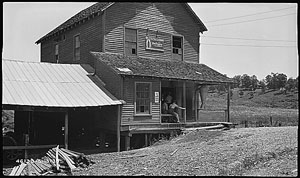
Source: Peters, B.G., grist and saw mill - NARA – 280488, National Archives
By opening with the setting of an abandoned mill in “The End of Something,” Hemingway establishes a less than hopeful mood. Because something has changed, you anticipate that more change is coming. In this section, you’ll discover more about the relationship between the central characters of the story, Nick and Marjorie. You might notice that the characters aren’t described with the same kind of detail that Hemingway uses to paint the setting. You can easily imagine the mill with the “broken white limestone of its foundations showing through the swampy second growth.”
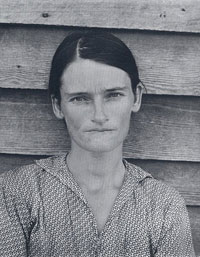
Source: Allie Mae Burroughs, wife of cotton sharecropper, Hale County, Alabama, Walker Evans, Wikimedia
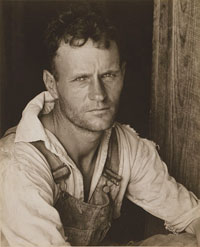
Source: Floyd Burroughs, sharecropper, Walker Evans, Wikimedia
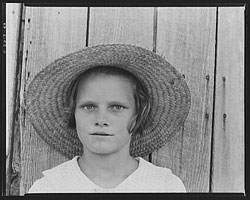
Source: Lucille Burroughs, daughter of a cotton sharecropper. Hale County, Alabama, Walker Evans, Wikimedia
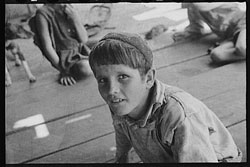
Source: William Tengle, Hale County, Alabama, Walker Evans, Wikimedia
Hemingway doesn’t describe how characters look, nor does he tell us what to think about them in the excerpt you just read. He prefers to show us their qualities through their speech and actions. This “showing” approach is called indirect characterization, whereas “telling” readers about the way characters look is called direct characterization. A rare instance of direct characterization occurs when he tells us the following about Marjorie: “She loved to fish. She loved to fish with Nick.”
For the most part, the author of “The End of Something” uses indirect characterization. In fact, Hemingway is known for his realistic dialogue, which allows readers to imagine how characters look and act.
In this section of the story, we get to know Marjorie and Nick through their dialogue—what they say to one another. Through their brief conversation, you get hints that there might be some conflict between them. For example, Marjorie’s upbeat comment falls flat when Nick responds negatively.
“They’re feeding,” Marjorie said.
“But they won’t strike,” Nick said.
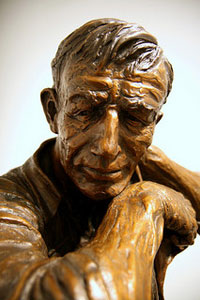
Source: Convergence / Jim Brothers, Topeka and Shawnee County Public Library, Flickr
You can also make some inferences about the backgrounds of the characters through their actions. You know, for instance, who the captain of the little rowboat is and who the first mate is. You can tell that Nick prepares the bait swiftly and competently, while Marjorie approaches the task more gingerly.
Through the author’s use of indirect characterization, you can infer something about Nick and Marjorie. By reading between the lines, you begin to attribute some qualities to them. Because short stories are so brief, each line of dialogue and each action is meaningful.
From the list of adjectives below, decide which descriptive adjectives might be best applied to Nick and which ones might describe Marjorie. You can mouse over some of the words that may be unknown to you to see a definition. Find some evidence in the text that supports your decision. For example, the first adjective, “taciturn,” means silent or disinclined to talk. Its antonym is talkative. This word might describe the behavior of both characters because the couple ate dinner without talking, but additional evidence points to Nick. After Marjorie dreamily remarks that the mill looks like a castle, “Nick said nothing.”

1. Taciturn
2. Inquisitive
3. Romantic
4. Dependent
5. Intuitive
6. Supportive
7. Critical
8. Indecisive
9. Pessimistic
10. Insensitive
Now that you have assigned adjectives to the two characters, the next task is to read closely to discover more about the story.